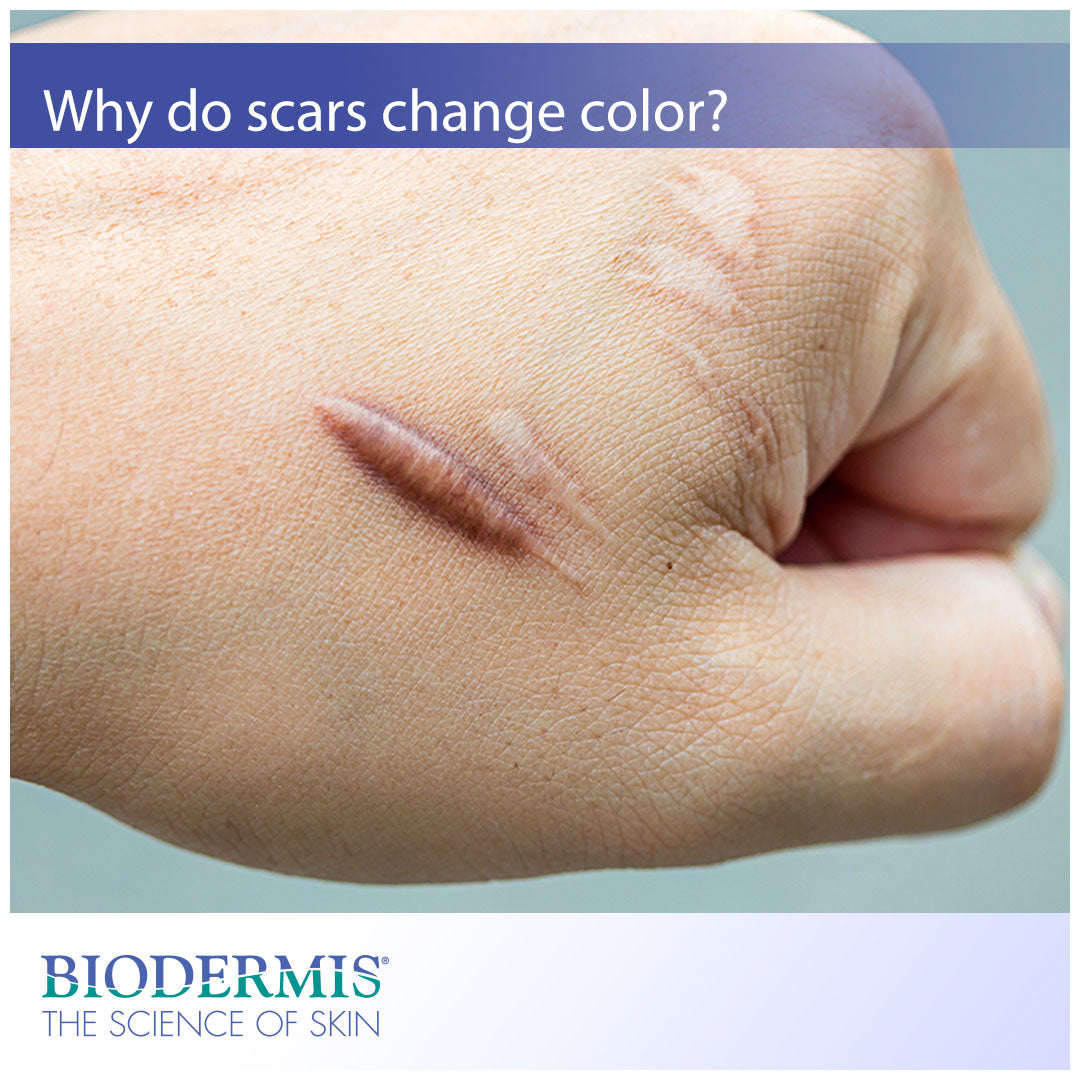There are a number of reasons why your scar might change color over time, or why some scars appear different than others. The color of a scar depends on a number of factors including wound severity, genetics, skin type, and environmental factors. It is important to understand that there is no normal range of color for scars. Everyone’s skin heals differently, and that means scars can turn out in a myriad of different shapes, sizes, textures, and colors. Luckily, all scars follow the same wound-healing stages and can be treated using the same methods.
Continue reading to learn more about the color of your scar and how to reduce scarring after surgery or injury.
Scar types and colors
Scars can appear in a myriad of different colors including red, purple, pink, white, or brown. You may be wondering if the color of your scar is abnormal. Scars fall under a wide range of tones and complexions depending on the person’s skin type. Most scars that are not keloids start off as immature scars that may appear red or pink for the first few weeks or months. Sometimes, immature scar can be sensitive and feel itchy or painful to the touch. A slightly painful or itchy scar is quite normal, but if the pain and itchiness is excessive, you should bring it to the attention of your dermatologist. Immature scars, over time, will often become white and flat. White or pale scars are a good sign that the scar has fully healed.Scars that are slightly elevated are also usually red or pink in complexion. These types of scars are classified as hypertrophic scars. Hypertrophic scars can be linear, meaning they run in a straight line, or widespread (usually from a burn injury). Hypertrophic scars form within the boundaries of the initial wound site and become ropey in appearance after fully matured. Sometimes, it can take up to two years for these types of scars to fully mature. Another classification of scars that are often mentioned alongside hypertrophic is keloid scars. These scar types can be purple or brown in appearance and tend to grow past the initial boundary of the wound. Like hypertrophic scars, keloids can be itchy and painful. They may continue to grow and spread over the course of several years.
Scar therapy
It’s a fact that scars come in many different shapes, sizes, and colors. However, all scars are the result of the same wound-healing process. Because we understand how wounds heal and scars form, we are able to treat them in clinically-proven and effective ways. Silicone gel sheeting and silicone ointments have been used to treat discolored scars for over 30 years. Many surgeons and dermatologists today consider topical silicone to be the main line of defense against hypertrophic and keloid scars.Silicone works through two mechanisms of action: dermal hydration and collagen regulation. All scars need an ideal healing environment (homeostasis) of the right levels of moisture and oxygen. Topical silicone helps the scar bed retain moisture while also allowing sufficient amounts of oxygen to pass through its permeable layer. In turn, this helps the collagen in scar tissue to stabilize to a normal level, allowing the scar to flatten and smooth out.
Biodermis is an innovative market leader with 30 years of expertise in the medical silicone industry. Visit Biodermis.com today to explore a complete range of scar management and post-operative care solutions.
PHYSICIANS AND MEDICAL PROFESSIONALS: REFER OR RESELL?
Biodermis offers custom tailored referral programs designed to simplify and reduce the cost of your patients' post-op care. Additionally, we offer professional pricing if you opt to retail our products. Give us a call at 800.322.3729, and we will be happy to provide additional details on these programs.



